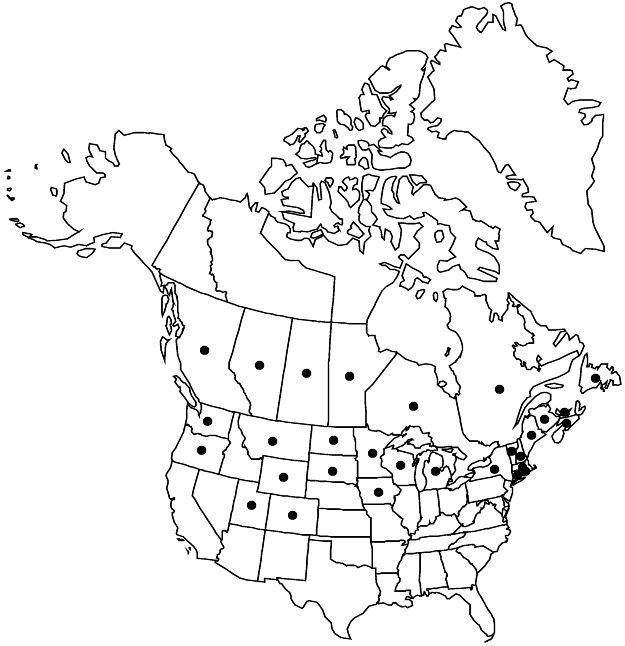Crataegus chrysocarpa var. chrysocarpa
Shrubs, 20–30 dm. Leaves: blade ± ovate to rhombic-ovate, base ± cuneate, sinuses: max LII 15–20%, lobe apex acute, veins 3–5 per side, abaxial surface glabrous, sometimes hairy on veins or hairy young, glabrescent, adaxial appressed-short-pubescent, glabrescent. Inflorescences: branches sparsely to densely villous. Flowers 15–20 mm diam.; hypanthium densely villous; stamens 10, anthers cream or ivory. Pomes red (darkened to burgundy only if dried and shriveled), suborbicular to broadly ellipsoid, 8–10 mm diam., hairy.
Phenology: Flowering May–Jun; fruiting Sep–Oct.
Habitat: Well-drained mesic sites with high light intensity, under aspen
Elevation: 0–2200 m
Distribution

Alta., B.C., Man., N.B., Nfld. and Labr. (Nfld.), N.S., Ont., P.E.I., Que., Sask., Colo., Conn., Iowa, Maine, Mass., Mich., Minn., Mont., N.H., N.Y., N.Dak., Oreg., R.I., S.Dak., Utah, Vt., Wash., Wis., Wyo.
Discussion
Variety chrysocarpa occurs through nearly the whole range of the species. Through most of its range the leaves are 2–4(–7.5) cm and ovate to rhombic-ovate. A variant with smaller leaves, glabrous surfaces, densely tomentose inflorescence branches, and early salmon-orange, eventually crimson, ellipsoid pomes has been found scattered in the valleys of southern British Columbia and into Alberta. Its range is not understood because it can be difficult to determine fruit shape from herbarium specimens. Forms with larger leaves (to 6–8 cm) are not infrequent in Newfoundland, Quebec, and northern New England, paralleling a similar situation in Crataegus macrosperma; occasional narrowly elliptic-leaved forms occur in Prince Edward Island. Taller and more treelike variants are known from Maine. Some specimens, particularly from Minnesota, have a thin, non-persistent abaxial surficial indumentum. Such specimens are abundant in some areas and, except for leaf shape, seem to represent intergradation with var. faxonii.
Selected References
None.